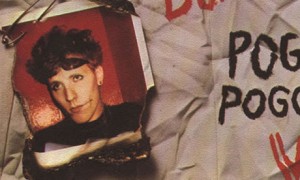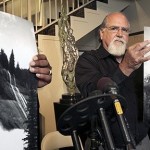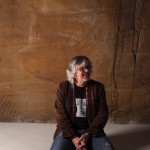“There’s something I think I do,” says Martin Creed, “but that’s not necessarily what I do”. It’s a characteristically mind-bending remark. It seems simple, and yet it leaves you with an uncomfortable sense of having mentally stepped on a stair that wasn’t there. As it happens, steps and stairs feature quite heavily in the work that Creed is about to present at the Edinburgh Festival. One of the pieces in his exhibition at the Fruitmarket Gallery will be a staircase that emits a different note as you walk up it, literally climbing up the scale. Eventually, a permanent set of Creed steps will be constructed nearby in the centre of the city, each made of a different type and colour of marble. In the past, Creed has composed music for an 18-piece orchestral ensemble and his own rock band, Owada. The results tend to be minimalist: the lyrics of the song 1-100, for example, consist of singing those numbers. He has proposed a musical opening for the 2012 Olympics that involves getting every Londoner to ring any bell they can find – from bicycle to church – loudly and repeatedly for three minutes. Creed’s recent interest in dance grew out of a simple interest in physical movement. “I’ve always really loved watching people run on TV. Just watching bodies is beautiful. So I was thinking about movement and the simple idea that it would be nice to have a display of that for people to look at.”
Read More: Martin Creed interview
“When he hit European television screens in 1977, pogoing across music stages with a glint in his eye and a flower in his buttonhole, Plastic Bertrand gave no reason for anyone to doubt him when he yelled into the audience “Ça plane pour moi” (All’s cool with me). Thirty-three years later, however, the erstwhile hero of Brussels’ music scene could be forgiven for ruing his youthful chutzpah. If evidence given to a Belgian court this week is to be believed, the man recognised as the voice behind Euro-punk’s anthem had built his acclaim on shaky ground: he did not actually sing the song. According to a linguistician commissioned by a Belgian judge to examine the original recording of Ça Plane Pour Moi and compare it with a version released in 2006 by Bertrand’s former producer, the singer of the 1977 track spoke with a distinctive twang that would not have come naturally to the Brussels-born front-man. “With the endings of sentences on the tapes the voice can only belong to a Ch’ti or a Picard,” read the judgment, implying the true singer must have originated from north-eastern France, an area which produced both the Picard dialect and the affectionately mocked Ch’ti patois. It is also the area that produced Lou Deprijck, the track’s composer and producer, who believes he has been vindicated in his claim to be the true performer of the big-selling single…”
Read More: Belgian singer Plastic Bertrand denies allegations over hit song
“A trove of old glass negatives bought at a garage sale for $45 has been authenticated as the lost work of Ansel Adams and worth at least $200 million, an attorney for the owner said Tuesday, but the iconic photographer’s representatives dismissed the claim as a fraud and said they’re worthless. Arnold Peter, who represents Fresno painter and construction worker Rick Norsigian, said a team of experts who studied the 65 negatives over the past six months concluded “beyond a reasonable doubt” that the photos were Adams’ early work, believed to have been destroyed in a 1937 fire at his Yosemite National Park studio. Adams is renown for his timeless black-and-white photographs of the American West, which were produced with darkroom techniques that heightened shadows and contrasts to create mood-filled landscape portraits. He died in 1984 at 82.”
Read More: Adams heirs skeptical about lost negatives claim
“David Walsh is not like most collectors. For starters he does not seem to care what people think of him or his museum. Here are his views on the potential benefits Mona will have to local business: “We don’t know whether I’m going to make any difference to the economy and I must say I don’t particularly care. If it happens, great. If it doesn’t happen, I don’t give a sh_t.”
“The 48-year old Tasmanian, who made his money by developing complex gaming systems, describes himself as a “full-on secularist”. “Mona is my temple to secularism,” he adds, explaining that he is interested in “talking about what we are”, in other words what makes humans human. “People fucking, people dying, the sorts of things that are the most fun to talk about.”
“The first of many surprises for visitors will be the building itself. When you approach Mona from the ground, it is nowhere to be seen. Visitors to Moorilla, Walsh’s six-acre estate overlooking the River Derwent, will see a glass-fronted restaurant perched on the edge of a cliff, eight pavilions offering luxury accommodation, a vineyard and a brewery but no sign of a major museum building. The entrance is a small pod-like structure leading to an elevator and a staircase which winds its way underground.
“What awaits you inside is both spectacular and completely unexpected. Mona is huge, with around 6,000 sq. m of display space over three floors. Because it has been excavated out of a cliff, the architect Nonda Katsalidis of the Melbourne firm Fender Katsalidis had to remove around 60,000 tonnes of earth and sandstone, before building could begin. The result is breath-taking. One wall of the museum is the sandstone cliff. From there the architect has built out towards the river using steel and concrete…”
Read More: A “subversive Disneyland” at the end of the world




